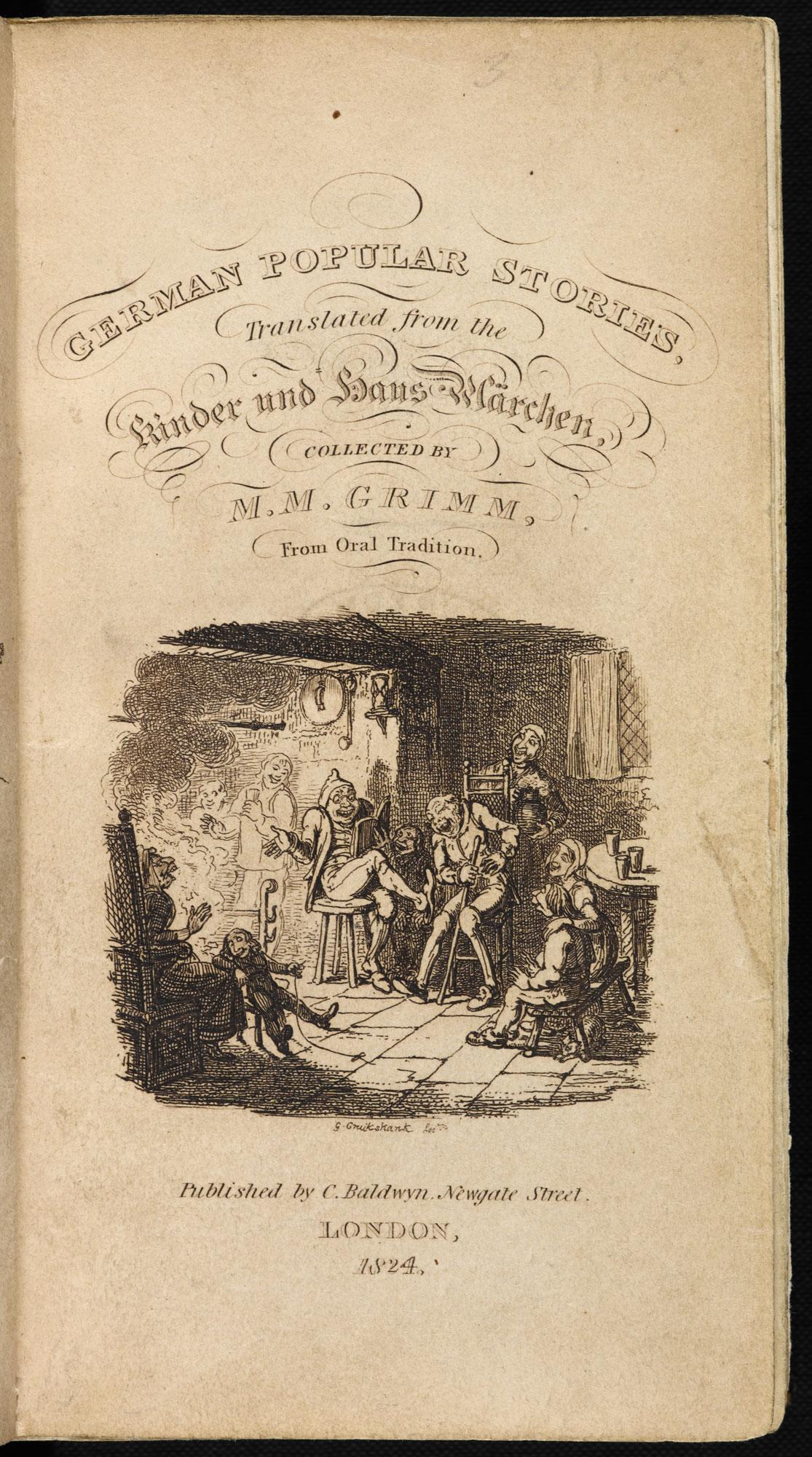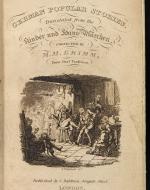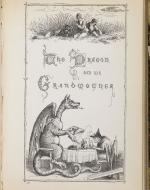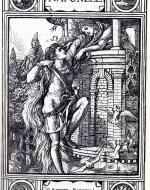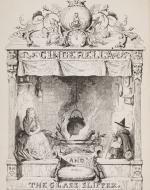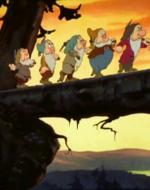Created by Fiona Promisel on Mon, 03/01/2021 - 23:42
Description:
Until the mid to late 19th century, didactic texts that were meant to indoctrinate and scare children were the primary type of stories children read. In 1812, Wilhelm and Jacob Grimm published their first set of fairy tales known as Children's and Household Tales. These frightening stories were not intended for children, however they were read by them. As these tales' popularity in Germany increased, English author Edgar Taylor translated them into English. These stories became immensely popular in part because Taylor's translations made the tales more child friendly by altering wording and enlisting the help of popular artist George Cruikshank to create illustrations. The Grimm Brothers' stories act as a bridge between didactic texts and entertainment. Through these translations, the stories became more palatable towards children and were altered to be more entertaining. Because of this shift in emphasis, these stories are transition pieces that connect didactic texts to those meant for entertainment.
A Translation of Kinder und Haus Märchen (Children’s and Household Tales), by The Grimm Brothers, 1824-26, The British Library.
The Grimm Brothers wrote many dark fairy tales, and in 1812-15 the first two volumes of Kinder und Haus Märchen (Children’s and Household Tales) were published in Germany. Edgar Taylor translated the Grimm Brothers' Children’s and Household Tales and collaborated with David Jardine. This translation was wildly popular and paved the way for fairy tales to be an acceptable form of literature for children in the 19th century. Taylor wanted children to enjoy these tales and therefore replaced darker parts, such as changing words like “devil” to “giant,” allowing these tales to take a turn away from didactic themes. The early German editions are not illustrated, but the English translations are illustrated by George Cruikshank, who created the cover design and inspired other future fairy tale illustrations.
A Translation of The Fairy Ring: A Collection of Tales and Traditions, by the Grimm Brothers, 1857, the British Library.
Originally, the Grimm Brothers did not intend for children to be their primary audience; the Grimm Brothers wanted to "reconfigure the cultural history of Germany" (Marina Warner). It was not until cousins John and Edgar Taylor translated these tales into English and added delightful and lighthearted illustrations by George Cruikshank that they truly entertained children. The illustrations were a key factor in the marketability of the Grimm fairy tales for it softened these scary tales. This is evident in Cruikshank’s illustrations on the cover of Children’s and Household Tales (plate 1) and in his illustration from The Fairy Ring (plate 2). Here, Cruikshank makes his illustrations child friendly as seen by the jolly disposition of characters on the cover of Children’s and Household Tales and the friendly demeanor of the dragon in The Fairy Ring. These illustrations enhanced the fanciful nature of these tales after their translation allowing them to become more appealing to children. (Marina Warner, “Toads, Tongues and Roses.” Times Literary Supplement [November 16, 2012])
Walter Crane, “O Rapunzel, Rapunzel! Let down Thine Hair,” for "Rapunzel," from Household Stories, by the Brothers Grimm, 1882, Wikipedia
“O Rapunzel, Rapunzel! Let down Thine Hair” Walter Crane was a prominent children’s illustrator during the Victorian era. His beautiful illustration of “Rapunzel” with a caption in English saying, “O Rapunzel, Rapunzel! Let down Thine Hair” further demonstrates the extent of the influence of the translated Grimm’s stories. After Edgar Taylor translated German Popular Stories, his cousin, John Edward Taylor, translated The Fairy Ring. Within this translation where Taylor alters the story of Rapunzel, the importance of these translations emerges. The heroine is renamed Violet, and her mother craves lettuce, not flowers as in the original. Additionally, in the original story, Rapunzel becomes pregnant after a meeting with the prince, but Taylor elected to remove this in his translation. This modification further demonstrates how Taylor was able to market these tales to children. There were still dark components within the tales; however, the strong didactic element of fear lessened with these translations, moving these tales away from didacticism to entertainment.
George Cruikshank, "Cinderella,” for George Cruikshank's Fairy Library, 1853-54, The British Library.
After Cruikshank illustrated the Grimm Brothers fairy tales, he rewrote "Cinderella," "Jack and the Beanstalk,'' "Puss-in-Boots," and "Hop-O'-My-Thumb." For these original retellings, Cruikshank also added his own influence. Cruikshank drew more detail within his piece as evident in his “Cinderella” illustration and made the piece more whimsical and satisfying for children. He did this by making Cinderella look innocent and by putting comical faces on the walls. Cruikshank’s style in his own retellings is very similar to Crane’s for both are very detailed and depict important moments within the stories as well as show emotion. This combination results in images which are intriguing to both adults and children. Cruikshank's own ideology was added into his tales as well. He was an avid supporter of the temperance movement, and in his new tales he added plot points, such as turning the giant into an alcoholic and having all the liquor be thrown into a massive fire in celebration of the wedding to sway his audience in favor of his views. This transition, although well before the 20th century when the "knowing child" phase of children's literature began, is a further step away from didacticism because it illustrates how children’s stories can have educational messages rather than be fear mongering tales.
Still from Disney's Snow White and the Seven Dwarfs, 1937, Wikipedia.
Today the Grimm fairy tales are barely recognizable from their original format. With the focus on children being innocent as well as "knowing" individuals, over time, fairy tales have been adapted to fit these new ideologies. "Snow White'' for instance was animated by Walt Disney and made entirely enjoyable to children. Now "Snow White," "Cinderella," and "Little Red Riding Hood'' are few of many household names of Grimm retellings that have made their way into mainstream media. Costumes, movies, and book adaptations have been created to further market these stories. Without the translation of these tales by the Taylors, they may have never gained popularity in today's world and become the influential stories that children grow up with today.

